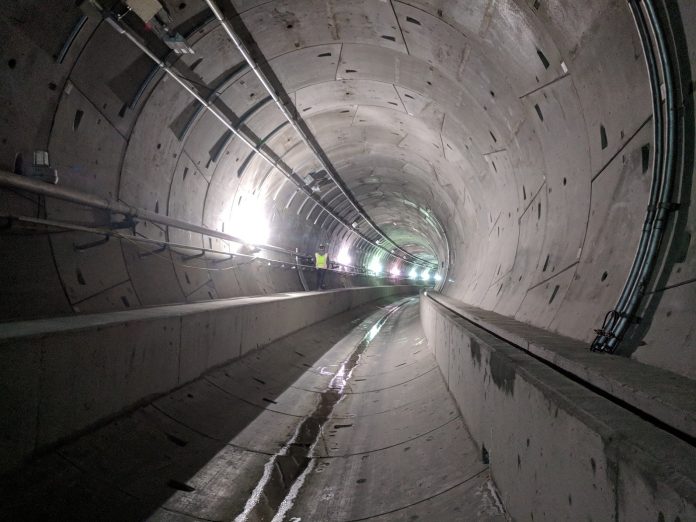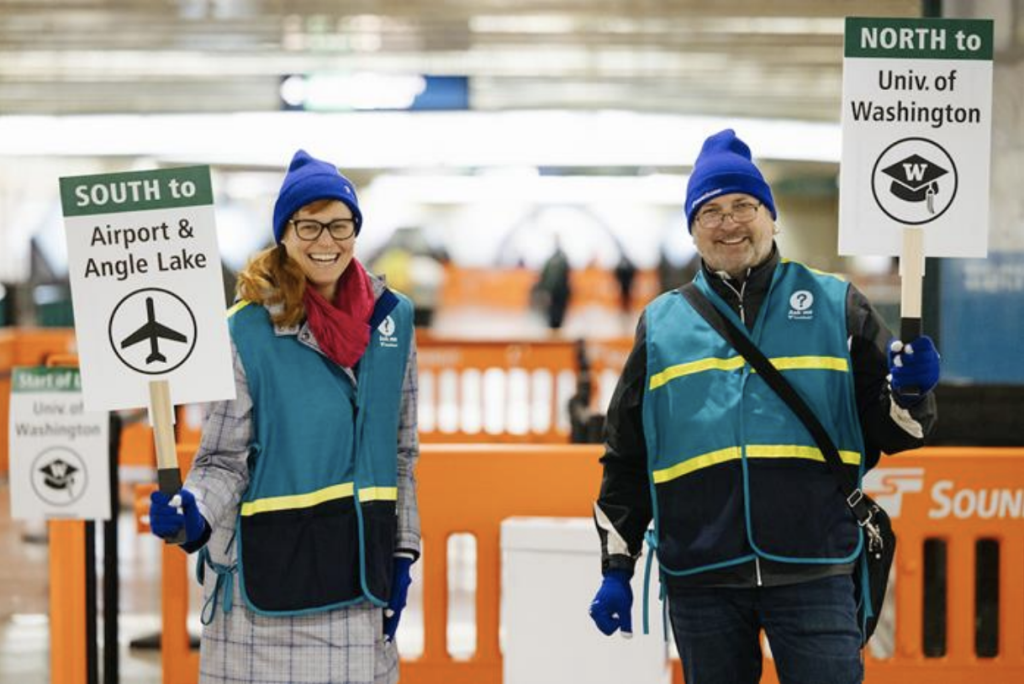Sound Transit has additional Future Ready maintenance and repair projects teed up for this year and next. In a briefing, agency staff outlined planned works and lessons learned from previous ones.
Julie Timm, the new Sound Transit CEO, essentially issued a mea culpa for the agency on the Columbia City tile replacement kerfuffle and said that the agency has a new approach to carrying out such works.
“Some of these projects were set to be done right about now, I believe in the February-March timeframe, and what I found was when we were looking through these were important projects. But the coordination internal and the communication with our riders was frequently rushed,” Timm said. “While the work being done was good work, the implementation of it, consolidation of it, the communication with our staff, the ability to communicate with King County Metro to set up those bus bridges, some of the assumptions we made about what our riders would prefer, we used our best judgement, but I think there are ways we can do it better, and more effectively, and more efficiently.”
Suraj Shetty, Sound Transit’s Executive Director of Operations, presented the upcoming work and changes ahead to improve rider experience during the construction. He outlined seven buckets of projects planned, including four newly announced ones. Some of the projects are expected to overlap to take advantage of efficiencies or perform multiple jobs with closure. Work is anticipated to start as soon as late spring or early summer.
Three projects that are likely to be paired together are all in the Downtown Seattle Transit Tunnel. One of the three projects is a short segment of rail replacement.
“As you ride the train between University Street and Westlake Stations, you’ll notice that as the train curves right, the train shakes and jerks around and the ride quality’s poor,” Shetty said. “It’s a very tight curve at 90-degrees in just a couple hundred of feet and the rail there is suffering from defects and accelerated wear. We intend to tear it out, replace it with new rail with the correct geometry and the result for passengers should be a smoother trip through that section.” Replacing the track will also help reduce wear and tear to the agency’s equipment.
A second tunnel project is replacement of bond boxes, which house signal connections to tracks. A total of 60 bond boxes need replacement since they were damaged during shared bus operations in the tunnel between 2007 and 2019. Damage to this equipment has led to occasional signal failures, so fixing this will improve system reliability and the new bond boxes should last a very long time. This will require work from just east of Westlake Station to just south of International District/Chinatown Station.
And a third tunnel project is a high voltage system assessment, only possible when the electrical system is fully powered down. This will allow the agency to inspect the system’s integrity to ensure it is in good condition and avoid future service disruptions, unplanned or otherwise.
A new project that Shetty mentioned is a grade crossing repair. “Currently passengers experience reduced speeds through Stadium and International District/Chinatown Stations due to water over the rails and saturating the track at the Royal Brougham grade crossing,” he said.
An emergency repair to this crossing was required in late February, which led to an unplanned period of single-tracking. Shetty said that a permanent fix will involve track replacement and drainage improvements, which allow a restoration of regular speeds. Right now, the agency has a “slow order” for this section limiting trains to 10 mph.
A second slow order also applies to the southbound track between Pioneer Square and International District/Chinatown Stations, according to claims by a reddit user identifying themself as a Link operator. Trains are said to be limited to 10 mph due to a track defect there. Shetty didn’t mention this issue during the presentation and The Urbanist has reached out to Sound Transit for confirmation and clarification.
Like last summer, Sound Transit will also be taking on platform repairs in the Rainier Valley again, this time at Othello and Rainier Beach Stations. “The mortar on the edge of the platform is not performing the way it was meant to and therefore the ADA tiles on top come loose and could be a hazard,” Shetty said. “We would conduct this work at both of these stations at the same time and the impact of the single-tracking would be less intrusive than last year since the location of crossovers are in a better position.”
Also like in last fall, the agency plans to replace more overhead contact wire between Tukwila International Boulevard and Rainier Beach Stations. “Over time, the components of this system wear and need to be replaced,” Shetty said. “So the project will replace a section of the contact wire before it reaches a condition that it will be impacted.”
Several projects are related to Link system expansion. Shetty said that plans for those are still being finalized and work is expected to happen between spring and early next year. Sound Transit needs to accomplish several tasks before the northern expansion opens, including: replacement of guideway railings at Northgate Station for platform safety, corrective work to electromagnetic cables to prevent future Apple Cup-like failures, and completion work to connect overhead catenary power systems for the Lynnwood Link Extension.
Shetty also noted that an East Link tie-in project is ahead, too. “The final system expansion work that’s on our radar right now that will have service impacts is related to our 1 and 2 Line connection for East Link,” he said. “This would include tie-in activities associated with system testing as well as repairs to the plinths for the rail supports installed in the alignment. This project we anticipate will have a significant service impact but the overall plan is not fully developed yet.”
This work is anticipated to be done in early 2024 and will required a multi-week service disruption with single-tracking between Stadium and Westlake Stations.
Going forward, Sound Transit plans to minimize impacts as much as possible and communicate impacts early for planned maintenance repair and replacement works. Shetty highlighted how the agency is committed to better rider experience during planned service disruptions.
“For each service disruption, we are planning more lead time for the development of a passenger care plan that serves as a coordinated planning process to enhance passenger experience, navigating service impacts, improve overall communication, reduce confusion, and provide visible resources on our system to help guide passengers on their transit journey,” Shetty said.
Service disruptions will be accompanied by ambassadors to assist riders and information will be communicated in multiple languages. Digital feeds for trip planning tools will also be loaded up with revised schedules and information to allow for better on-the-fly decision-making by riders.
More details on exact timing of the next round of Future Ready projects will be coming in the next few months. Fortunately for riders, Sound Transit has committed themselves to a more rider-focused approach in conducting planned maintenance and repairs that should make them more bearable.
Stephen is a professional urban planner in Puget Sound with a passion for sustainable, livable, and diverse cities. He is especially interested in how policies, regulations, and programs can promote positive outcomes for communities. With stints in great cities like Bellingham and Cork, Stephen currently lives in Seattle. He primarily covers land use and transportation issues and has been with The Urbanist since 2014.




